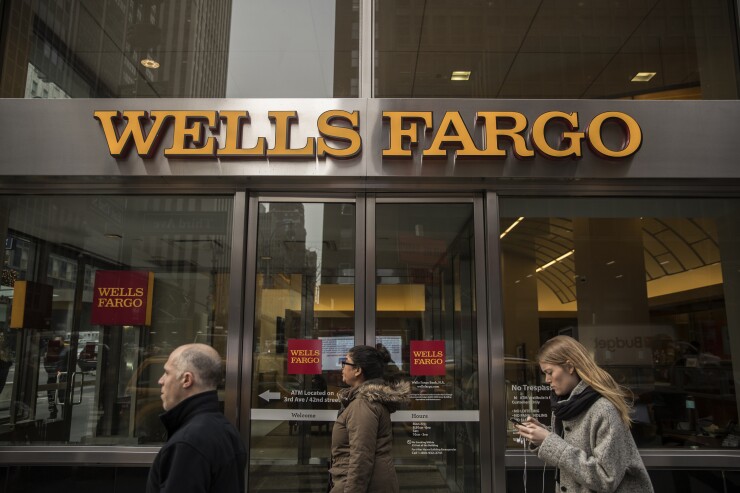After several years of swelling expenses, the cost-cutting push by Wells Fargo CEO Charlie Scharf is finally showing signs of progress.
The San Francisco company is on track to meet its full-year expense guidance of about $53 billion, which is $4.6 billion lower than its 2020 expenses, executives said Wednesday. Noninterest expenses fell to $13.3 billion in the second quarter, an 8% drop from the same period a year earlier.
The headway on costs was welcomed by analysts who were sometimes frustrated by earlier Wells Fargo executives after they frequently failed to deliver on key targets.
“Given what they can control, we think management is doing a pretty good job,” said Kyle Sanders, senior equity research analyst at Edward Jones, “and we think they’re making progress towards turning the company around.”

In January, the $1.9 trillion-asset company
Aggressive cost-cutting is seen as necessary to boost the competitive position of Wells Fargo, which has a larger expense base as a percentage of its revenue than other large U.S. banks, and which has been forced to spend heavily to clean up a series of scandals. The firm’s ability to generate more revenue has been limited both by the low interest rate environment and an asset cap imposed by the Federal Reserve Board in 2018.
At the end of the second quarter, Wells Fargo reported an efficiency ratio — a measure of expenses as a percentage of revenue — of 66%. That was down substantially from 80% in the second quarter of 2020, but still up from 62.3% in the same period in 2019, and above the ratios reported this week by JPMorgan Chase, Citigroup and Bank of America.
“[It’s] too early to call full victory, but this quarter was definitely a very important step in the right direction,” said Scott Siefers, managing director at Piper Sandler, who said the company’s expenses came in below his expectations.
Wells has reduced its locations by about 5% since the start of the year, parting ways with more than 2 million square feet of real estate. It is selling a tower in downtown Phoenix and continues to evaluate upcoming lease expirations for further closures, said Chief Financial Officer Michael Santomassimo.
The bank’s real estate footprint was due for some trimming even before the pandemic, and Wells still has a “significant opportunity to right-size some of that space,” Santomassimo said in a conference call with reporters. He added that customers’ increased use of digital tools will allow for fewer employees.
“It will not only make us more efficient,” Santomassimo said. “I think over time, it will actually allow us to do a much better job serving customers in a more streamlined way, which would be good for everybody.”
The bank’s net income rose to $6 billion in the second quarter, outperforming analysts’ expectations, and up from a $3.8 billion loss in the same period last year, when the COVID-19 pandemic hammered bank profits.
Wells Fargo’s stock price rose Wednesday after its earnings report was released, ending the day up 3.98% to $44.95.
Still, the nation’s fourth largest bank continues to work to address regulatory concerns, particularly those of the Fed, which imposed the asset cap in the wake of a series of consumer scandals. Though Wells is making progress on addressing those concerns, related legal costs can be “lumpy and unpredictable,” Santomassimo cautioned during a conference call with analysts.
Santomassimo also said that Wells is “seeing signs of green shoots” in auto loans, credit cards and commercial real estate, even as overall loan balances have continued to decline. Average loans fell to $854.7 billion in the second quarter, down from $873.4 billion in the first quarter and $971.3 billion a year earlier. The dip reflected subdued demand for credit as businesses and consumers remain flush with savings and pay down their existing credit lines.
The unusually high payment rates by borrowers will “normalize eventually” and prompt an uptick in loan balances, but it is unclear when that will happen, Santomassimo said.
In one recent strategic pivot, Wells decided to
Asked about the decision, Scharf told analysts that it followed the bank’s “exhaustive effort” to simplify the business and scrap unneeded parts, such as its international wealth business, asset management services and student loans.
Personal lines of credit were a “very, very small business for us,” Scharf said. He argued that Wells Fargo can continue to serve customers through other credit products, including a
“There’s a lot of opportunity in the card space for us to do a better job of providing compelling products” to existing Wells customers and new clients, Santomassimo told reporters.


